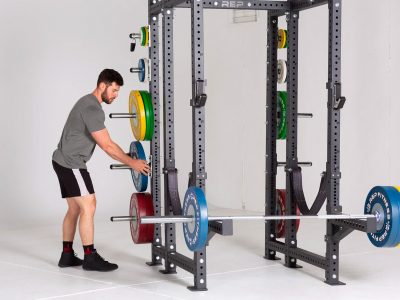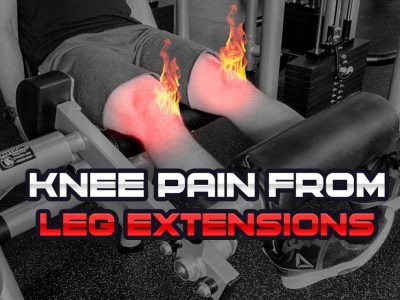Ever wondered about the materials that make up your favorite weightlifting equipment?
Dumbbells, a staple in gyms and home workouts alike, come crafted from a variety of materials.
Bạn đang xem: What Are Dumbbells Made Of Updated 07/2024
In this article, we’ll go into detail about these diverse components – vinyl, cast iron, rubber/neoprene and even wood steel – each with their unique pros and cons.
Ready to get a grip on what goes into your workout gear? Keep reading!
Main Materials Used in Dumbbells
Vinyl
Vinyl dumbbells are a favorite choice for home gyms and fitness beginners. The reason for their popularity lies in their design – lightweight, affordable, and gentle on the floor when dropped.
These benefits make them ideal for introductory-level exercises where the focus is more on form than heavy resistance.
However, there’s a trade-off – vinyl isn’t as durable as some other materials used in dumbbell construction such as cast iron or rubber.
High-intensity workouts and heavy weights can cause these types of dumbbells to crack over time so careful handling is vital to prolong their lifespan.
Despite that limitation, countless fitness enthusiasts swear by vinyl dumbbells’ suitability for aerobic workouts, physical therapy, walking exercise and even water-based routines due to its non-rusting nature.
Cast Iron
Cast iron is a popular material used in the construction of dumbbells. It is highly durable and versatile, making it an excellent choice for strength training exercises.
Cast iron dumbbells are known for their sturdiness and ability to withstand heavy use.
They provide a solid grip, ensuring that the weight stays secure in your hand during workouts.
One thing to keep in mind with cast iron dumbbells is that they can be susceptible to rust if not properly maintained.
This means you’ll need to dry them thoroughly after use and store them in a dry area to prevent any moisture from causing corrosion.
Despite this drawback, many fitness enthusiasts prefer cast iron dumbbells for their reliability and long-lasting performance.
Rubber/Neoprene
Rubber and neoprene are popular materials used in the construction of dumbbells. These materials provide a soft and comfortable grip, making them ideal for long workout sessions.
Additionally, rubber and neoprene coatings on dumbbells help protect them from damage if dropped, reducing the risk of floor or equipment damage.
However, it’s important to note that rubber and neoprene dumbbells can have a strong odor, especially when new.
Despite this drawback, many people still prefer these materials due to their excellent grip and impact absorption properties.
Xem thêm : How Long Do Treadmills Last Updated 07/2024
So whether you’re a gym enthusiast or just starting out with weightlifting, considering rubber or neoprene-coated dumbbells might be a smart choice for your fitness journey.
Wood Steel
Wood Steel dumbbells offer a unique and stylish option for weightlifting enthusiasts. These dumbbells are crafted with a combination of wood and steel, providing an eco-friendly alternative to traditional materials.
The wooden handles not only add aesthetic charm but also offer a comfortable grip during workouts. Steel components ensure durability and strength, making these dumbbells suitable for intense training sessions.
While Wood Steel dumbbells may be less common compared to other materials, they provide a distinctive choice for those looking for both functionality and visual appeal in their workout equipment.
Pros and Cons of Each Material
Vinyl
Vinyl dumbbells are a popular choice for beginners and those on a budget. They offer a lightweight option that is easy to handle during workouts. Additionally, vinyl dumbbells tend to be more affordable compared to other materials.
However, it’s important to note that vinyl dumbbells may not be as durable as their counterparts. Over time and with heavy use, the vinyl coating can wear off or crack, potentially exposing the metal underneath.
This can lead to rusting and damage if not properly maintained. Despite these drawbacks, vinyl dumbbells remain a practical choice for those starting out in their fitness journey or looking for an economical option.
Cast Iron
Cast iron dumbbells are known for their exceptional durability and versatility, making them a popular choice among gym-goers. With their sturdy construction, they can withstand heavy use and last for years.
However, one drawback of cast iron dumbbells is their tendency to rust if not properly maintained. This means that they may require regular cleaning and care to prevent corrosion.
Despite this potential issue, the benefits of cast iron dumbbells often outweigh the maintenance required, as they offer a solid grip and can be used for various weightlifting exercises to build strength effectively.
Rubber/Neoprene
Rubber and neoprene dumbbells are favored by many gym enthusiasts for their soft and comfortable grip.
These materials provide a non-slip surface, allowing you to maintain better control during your workout routines.
However, it’s important to note that rubber and neoprene dumbbells can have a strong odor, especially when they’re brand new.
This is due to the manufacturing process and the nature of these materials.
So if you have a sensitive nose or prefer an odorless option, you may want to consider other types of dumbbell materials such as cast iron or vinyl.
Despite this potential drawback, rubber and neoprene dumbbells are still excellent choices because of their superior grip and overall comfort during weightlifting exercises.
Wood Steel
Wood steel dumbbells are a unique and environmentally-friendly option for those looking to add a touch of style to their workout routine.
These dumbbells are constructed using a combination of wood and steel, making them both durable and aesthetically pleasing.
However, they are less common compared to other materials like vinyl or cast iron. Wood steel dumbbells offer a natural feel and provide users with a comfortable grip during exercises.
Xem thêm : How Long Do Boxers Jump Rope Updated 07/2024
They can be an excellent choice for individuals who value sustainability and want equipment that stands out in the gym.
Choosing the Right Dumbbell Material
Consider your workout goals and preferences
When choosing the right dumbbell material for your workouts, it’s important to consider your specific goals and preferences.
Are you looking to build muscle, increase strength, or improve overall fitness? Different materials offer various benefits and drawbacks that can affect your workout experience.
Assess factors such as durability, maintenance requirements, cost, and availability.
For example, if you’re on a budget and starting out with weightlifting at home, vinyl or rubber dumbbells may be more affordable options that provide a softer impact if dropped.
On the other hand, if you’re an experienced lifter aiming for versatility and durability in a gym setting, cast iron or steel dumbbells with rubber coatings for grip protection might be ideal.
Assess the durability and maintenance requirements
To choose the right dumbbell material for your workouts, it’s important to assess their durability and maintenance requirements.
Cast iron dumbbells are highly durable but may rust if not properly cared for, so make sure to wipe them down and keep them dry after use.
Rubber or neoprene-coated dumbbells offer a soft grip and protection against damage, but they can have a strong odor that may require occasional cleaning.
Vinyl dumbbells are lightweight and affordable but may be less durable over time.
Wood steel dumbbells provide a stylish option that is eco-friendly, although they are less common in gyms. Consider these factors when choosing the perfect material for your fitness goals.
Take into account cost and availability
Considering the cost and availability of different dumbbell materials is essential when making a decision. Cast iron and steel dumbbells, while highly durable, can be more expensive compared to vinyl or rubber options.
However, if you’re looking for long-term investment pieces that will withstand heavy usage, they may be worth the extra cost.
On the other hand, vinyl and rubber dumbbells are often more affordable and widely available, which makes them great choices for beginners or those on a budget.
Keep in mind that availability may vary depending on your location and preferred retailer. So weigh your options carefully based on your workout goals and financial considerations to find the best fit for you.
Conclusion
Each material has its own pros and cons in terms of durability, grip comfort, affordability, and maintenance requirements.
When choosing the right dumbbell material for your workout routine, consider your goals and preferences, as well as factors like cost and availability.
Remember that the construction of the dumbbell can greatly impact your overall exercise experience.
So whether you’re a beginner or a seasoned gym enthusiast, make sure to pick the perfect material to help you reach your fitness goals!
Nguồn: https://usgyms.net
Danh mục: Gym Equipment










